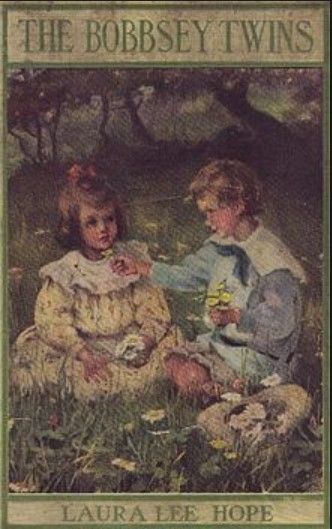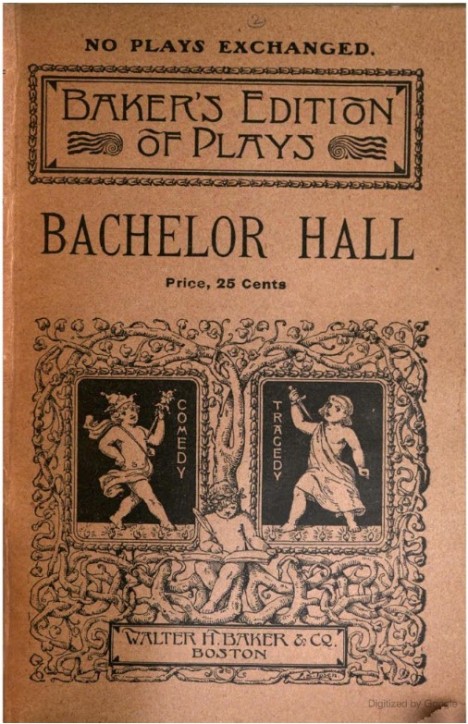
The Bobbsey Twins book cover, circa 1908 (from Wikipedia Commons)
Were you once hooked on the Bobbsey Twins? I was. The lives and adventures of Nan and Bert, Freddie and Flossie, and their family fascinated me, perhaps because their lives were so different from mine.
I had not thought about the Bobbsey Twins for years, but they came to mind as I was researching the lives of the three graduates of the Norwalk High School Class of 1907 who are the subjects of this post. Not the twins, actually, but their parents: Richard, owner of a lumber yard and Mary, his stay-at-home mom. As I recall, Richard was rarely seen, taking the morning train into the city for his job. Mary stayed home, caring for their lovely suburban home and two sets of twins, with help from the servants, of course. As I imagine it, the lives of the three Norwalk, Ohio natives who settled in Cleveland Heights and Shaker Heights must have been very much like theirs [1]
From the time John D. Rockefeller purchased land in what is now Cleveland Heights, the area has been a known for its affluence. Founded as a village in 1903, it had grown to 5,000 residents by 1910, and in 1920 it exceeded 15,000. One of the “streetcar suburbs,” it became home to many managers and other office workers in the city. [2]
 Stephen Young and Ruby Hoyt had homes in Cleveland Heights most of their lives. Stephen did not spend much of his life in the town, however. He was overseas during both two world wars, and between those conflicts, and after, he spent much of his time either in Columbus, Ohio, serving in the state legislature, and in Washington D.C. during his career in the House and Senate. He did practice law in Cleveland from time to time, and I imagine him commuting into the city from his home on Edgehill Road in Cleveland Heights. [3]
Stephen Young and Ruby Hoyt had homes in Cleveland Heights most of their lives. Stephen did not spend much of his life in the town, however. He was overseas during both two world wars, and between those conflicts, and after, he spent much of his time either in Columbus, Ohio, serving in the state legislature, and in Washington D.C. during his career in the House and Senate. He did practice law in Cleveland from time to time, and I imagine him commuting into the city from his home on Edgehill Road in Cleveland Heights. [3]
Ruby Hoyt married Hugh McAllister, a salesman in the publishing industry. Hugh must have been a good salesman, because he and Ruby had a live in maid at their comfortable home on Queenston Road in Cleveland Heights. They had three children, two girls and a boy. [4]
Ruby Hoyt and Nina Humiston
Nina Humiston also married a successful businessman: Henry Ronk, who worked in finance in the oil industry. At first they lived in Cleveland, but after Henry started a public accounting firm, they moved first to a home in Cleveland Heights, then, as his practice grew, to Shaker Heights, where Nina stayed at home to raise three children, with the help of a couple of servants. [5]
Ruby Hoyt, and Nina Humiston married well and probably lived the dream portrayed in the fictional world of the Bobbsey Twins. Certainly, they had their ups and downs in life: but overall they enjoyed a life of privilege and comfort. To these advantages, Stephen Young added power and prestige through his military and political careers. Any way you look at it, these members of the Norwalk High School Class of 1907 took full advantage of their place in society.
Next up, Lakewood, Ohio, where two graduates enjoyed similar lives of prosperity and marriage – and one who had the former, while forgoing the latter.
[1] From The Bobbsey Twins article in Wikipedia.
[2] The history of Cleveland Heights in the several decades of the twentieth century are from the Cleveland Heights history webpages in Wikipedia and of the Cleveland Heights Historical Society.
[3] For source material about Stephen Young, see his Wikipedia article, and the Stephen Young person page on the WeRelate Wiki.
[4] For source material about Hugh and Ruby McAllister, see the Ruby Hoyt person page on the WeRelate Wiki.
[5] For source material about Henry and Nina Ronk, see the Nina Humiston person page on the WeRelate Wiki. The history of Shaker Heights can be found on Wikipedia and the Encyclopedia of Cleveland History.
Thanks for visiting! Share and like this post below, and on Facebook. Let me know what you think in the comments. I’d love to hear from you!
Filed under: Cleveland Ohio, Demographics, Nina Humiston, Norwalk HS Class of 1907, Norwalk OH High School, Ruby Hoyt, Uncategorized | Tagged: cleveland Heights, Hoyt Genealogy, Humiston Genealogy, John D Rockefeller, McAllister Genealogy, Norwalk High School, Norwalk High School Class of 1907, Norwalk Ohio History, Norwalk, Ohio, Ronk Genealogy, Senator Stephen Young, Shaker Heights, Stephen Young, Young Genealogy | 2 Comments »






























